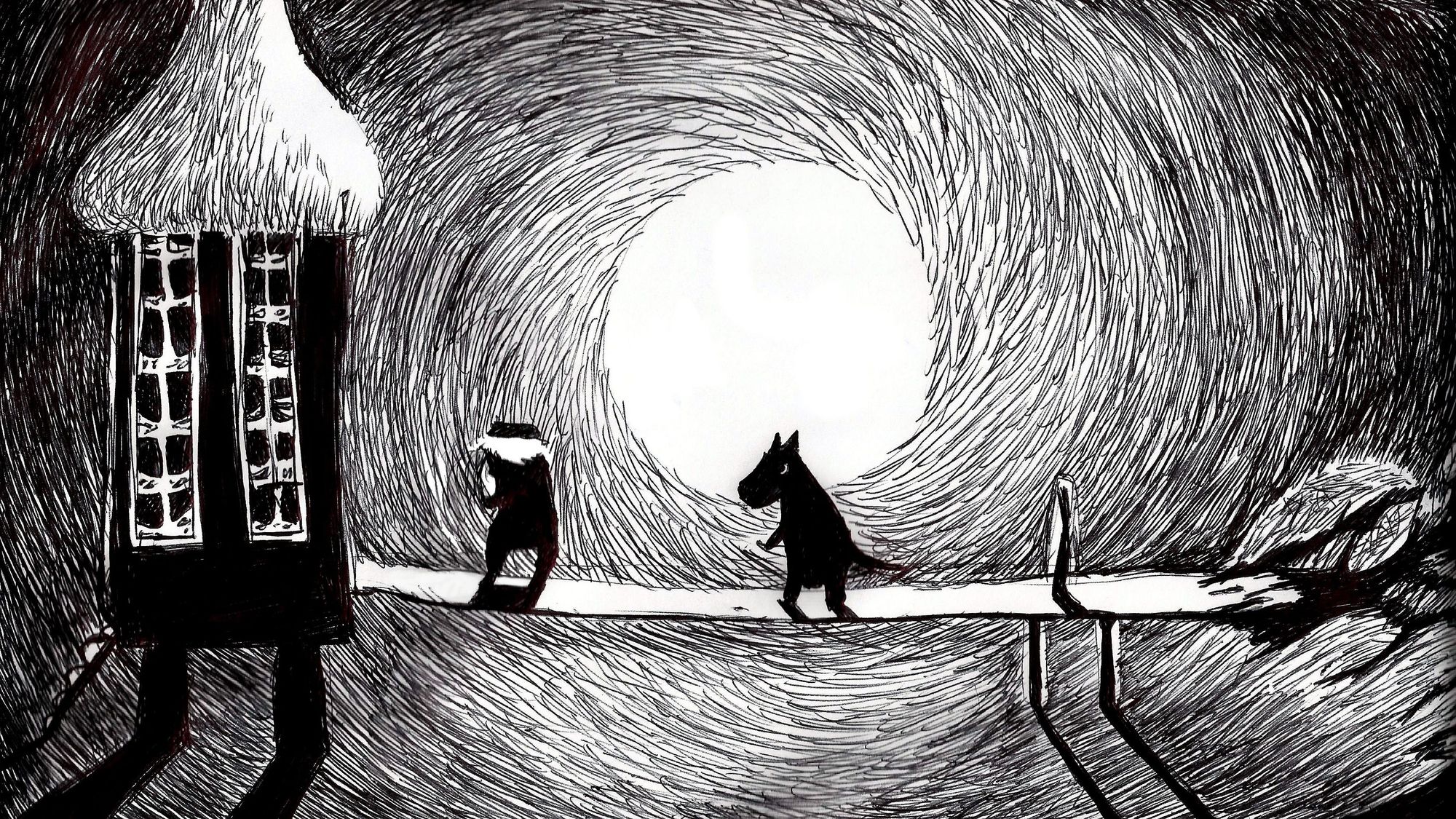007
“This is a violent time to be a human. How do we stay present, how do we intensely feel joy, and not just the crushing weight of it all?”

the Moomins edition!
WEATHER REPORT
artist dispatches on the weather, environment, and everyday life

Utqiagvik (Barrow), Alaska - Donald Zanoff
Sunrise, 11am, 2/11/22. -31F
Donald Zanoff is on Instagram @montanaalaskaman
ARTIST FEATURE
new approaches to climate

In the early-mid 20th century, Tove Jansson was famous for creating the storybook world of the Moomins, which endures today in theme parks and airport shops from her native Finland to Japan. In some parts of the world (notably not the US), the Moomins are as much a childhood staple as Pooh or Disney.


But Jansson was first and foremost an artist, an established painter and an illustrator for a local anti-fascist magazine during the rise of Hitler.


I've always been fascinated by how creating an imaginative alternate universe was Jansson's artistic response to the dark times that WWII brought to Finland. The Moomins' ecosystem was an idealistic, egalitarian rebuttal to despair and Nazis on the march. This is where you can start to find relevance to the current climate crisis - and what artists can do - in Jansson's work.
In Moominvalley, friends are friends, the natural world is both beautiful and fierce, adventures are to be had, predators are few, respect and kindness (but not necessarily sentimentality, this is Finland after all) are valued, and you can always find another bed in your house for a guest, even an odd one.
Jansson's generally benign and quirky vision is infused with nature’s power that can turn surprisingly dark: storms, floods, harsh winter personified by the menacing Groke (who ultimately is just lonely, and a sympathetic figure). The first book in the series is about a comet heading straight for Moominvalley, turning the sky red and drying up the oceans. Yes, the characters DO look up. Stories unfold in forests, streams, mountains, the open sea, caves, beaches, and islands. Characters include the smallest creatures, even insects, who are going about their lives as anyone would.

So, the question came to mind: could Tove Jansson be considered a 'climate artist' of her time?
Retroactively, of course. I doubt she would have called herself anything like that. But what can we learn from her in our current climate context?
When faced with the obliteration of her world, she created a new and better one.
One of the most basic themes threading through all the stories and images (including her iconic and evocative line drawings) is her characters' deeply intertwined relationship with the environment. In the books, nature is a recurring character as much as young Moomin himself.

That nature relationship is the key starting point for us today to have a shot at changing all that needs changing.
A less obvious but no less important connection is the human one. (Well, if we can use 'human' to cover the spectrum of creatures that populate Moominvalley, from the fuzzy hippo-like Moomintroll family, to Moomin's young human wanderer friend Snufkin, to Sniff who is more like a kangaroo of some sort.)
They live simply and are content with that. They are equally in thrall to the micro-dramas of their lives, the smallest found seashell, and the wildest storm. The characters speak cordially, honestly, without guile. They express genuine concern for each other. They remain dedicated friends even when someone is behaving erratically.

Which suggests the point that often goes overlooked - our climate fate, and our resilience to it, is bound not just to nature but to each other.
Discovering the Moomins as an adult was like opening a previously unseen door to a previously unknown way of being. As much as any book, film, or music from my youth, it reshaped my worldview. And that's the unique vision of just one artist, who has probably had a similar impact on millions of people, perhaps only rivaled by the likes of Tolkien and AA Milne.
What if many more current artists decided to put their shoulder to that particular wheel?
See also: How Tove Jansson’s love of nature shaped the world of the Moomins
FUTURE-MUSIC
music to carry us forward
‘I don’t know how to survive this. How the fuck do you survive this?’”
Alynda Segarra is a queer (her word) Puerto Rican female, a teen punk when growing up in the Bronx, an outspoken genre-bending folky as Hurray for the Riff Raff in New Orleans, and most recently replanted herself in Nashville on her journey to stake out both her political voice and her identity.
Her upcoming album, Life on Earth, which drops on February 18, is what she calls ‘nature punk’, a counter to the dire turns the world is taking. As she told The Guardian:
“This is a violent time to be a human. How do we stay present, how do we intensely feel joy, and not just the crushing weight of it all?”
Colorado Springs Indy has a good recent roundup of musicians taking on climate themes and practices. I decided to break it into installments, starting with their bit on Hurray for the Riff Riff:
[M]ore and more musicians from around the world have been sounding the environmental alarm through their songs, a practice that dates back to the 1927 Mississippi River Flood that left more than a half-million homeless and was commemorated by Bessie Smith’s “Backwater Blues” and Blind Lemon Jefferson’s “Rising High Water Blues.”
Five decades later, Gil Scott-Heron would record “We Almost Lost Detroit,” about the meltdown of a nuclear power plant 30 miles outside the city. Randy Newman’s “Burn On,” Spirit’s “Nature’s Way,” and R.E.M.’s “Cuyahoga” were all inspired by the polluted Cleveland river that burst into flames back in 1969. And then there’s Bob Dylan’s “A Hard Rain’s A-Gonna Fall,” Mos Def’s “New World Water,” Marvin Gaye’s “Mercy Mercy Me (The Ecology),” The Pixies’ “Monkey Gone to Heaven,” and pretty much anything by Pete Seeger.
Cut to present-day New Orleans, where Alynda Mariposa Segarra — the self-described “nature punk” who records and performs under the name Hurray for the Riff Raff — is about to release Life on Earth, which has already been hailed by Uncut magazine as the first great album of 2022.

Life on Earth finds Segarra drawing inspiration from a typically eclectic variety of sources, including The Clash, Bad Bunny, Beverly Glenn-Copeland, and author Adrienne Maree Brown’s Emergent Strategy: Shaping Change, Changing Worlds.
“Everything I have is gone, I don’t know what it’ll take to carry on,” she sings on the album’s first single “Rhododendron,” which would not sound out of place on a mixtape between Courtney Barnett and Lou Reed.
“We’re hit with hurricanes every year,” Segarra told The Guardian, “yet plant life is thriving. It was very comforting to look at these living beings and be like: ‘I don’t know how to survive this. How the fuck do you survive this?’”
ROUNDUP
One of the most exquisite shorts I've seen on trees and our connection to nature. Well, not so short, it's 40 minutes but totally worth it. It's not just another BBC nature documentary, as nice as those are. This is beautifully and artistically done, especially the photography, without trying too hard. Patagonia is doing a great job with this series.

Next week, Billy Friebele from issue 002 wraps up his artist residency at Capitol Hill Arts Workshop in Washington DC. He's hosting a series of two-hour open houses if you're in the area.
Indigenous poets read urgent climate message on a melting glacier
Grist | Nov 1, 2018
The film was not made for climate deniers. “I’m not here to convince someone else of my humanity or the reality of our situation,” Jetnil-Kijiner said. “I’m just trying to create a different sort of experience that speaks more truth to my own.”
7 Indigenous Brazilian Artists Advocating for the Amazon Rainforest
Remezcla
A list of talented Brazilian artists with Indigenous roots that have been using their voices and platforms to protest the abuse their peoples have been suffering since colonial times
Rihanna donates $15M to climate change organizations via her foundation
Yahoo News | Jan 26, 2022
"Climate disasters, which are growing in frequency and intensity, do not impact all communities equally, with communities of color and island nations facing the brunt of climate change,” Rihanna said in a statement. “This is why CLF prioritizes both climate resilience and climate justice work across the U.S. and Caribbean.”
